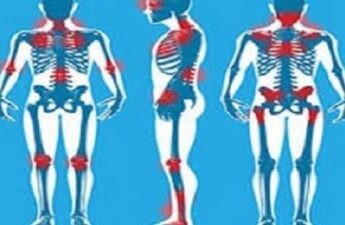People with chronic illnesses such as diabetes, food allergies, and fibromyalgia need to develop a “look, but don’t touch” mindset.
Let’s explore some of the things that are a threat to health, and optimal health maintenance in fibromyalgia.
Habits that could be triggering your fibromyalgia symptoms
1. G MS (monosodium glutamate)
MSG is a flavor enhancer found in many processed foods, as well as some fruits and vegetables.
These food additives activate neurons that increase pain sensitivity in fibromyalgia patients.
In a study of fibromyalgia patients conducted by researchers at the Malcolm Randall VA Medical Center in Florida, they found that “all had complete or near complete resolution of their symptoms months after removing monosodium glutamate (MSG), or MSG plus aspartame from your diet.”
When shopping, check the label for monosodium glutamate and other additives.
Watch for these ingredients on food labels:
Glutamic acid (E 620) 2
Glutamate (E 620)
Yeast extract
anything hydrolyzed
Caseinate
Jelly
2. Changes in weather
Several years ago, I began to notice extreme reactions to changes in temperature.
After shopping, I would have to go home and wrap myself in a blanket. Spending time in my garden during the summer, I would experience extreme heat after going back indoors.
My doctor informed me that people with fibromyalgia have a hard time regulating their body temperature.
In fact, up to 92 percent of fibromyalgia patients report that the weather affects their symptoms.
In my own experience, the most common weather events associated with fibromyalgia flare-ups are temperature extremes (too hot or too cold), changes in barometric pressure, and rapid changes in weather.
Take the necessary precautions to avoid or compensate for these triggers.
In extreme heat, stay well hydrated. In cold weather, wear layered clothing.
Keep a blanket in your car while you travel, or run errands, in case you need to take time to warm up.
3. Overexertion
It took me a while to understand that my “value” was not tied to my level of productivity.
I had to learn to pace myself and prioritize. Also, when we have a rare “good day”, we think that we have to do our best, while feeling good and energetic.
However, it doesn’t take long to discover that doing so can lead to a complete outbreak/crisis. It may not happen the next day, but eventually, the pain catches up with us, and we spend more time recovering. Discipline yourself to learn “not to touch that,” regarding boundaries.
4. Sugar
Sugar and simple carbohydrates provide an energy boost, but are also followed by a big drop in energy levels.
Also, people with FM are more sensitive to changes in blood sugar, so both sugar and simple carbohydrates should be avoided, or at least eaten in moderation.
Excessive consumption of sugar causes our nerves to swell as water enters. At the same time, sugar makes the outer layer of nerve cells less flexible, causing them to crack and break.
Sugar consumption can lead to nerve damage, often resulting in pain, numbness, or tingling in the extremities. However, if you can’t avoid sugar altogether, buy organic, unrefined sugar for baking and sweetening.
5. Caffeine
I confess that I love my morning cup of coffee. Given the struggle many face with fibro-fatigue and exhaustion, caffeine is always the answer for a “quick shot” of energy.
However, too much caffeine can have the opposite effects on our bodies, robbing us of sleep and sapping energy at the end of the day. If you can’t live without your “morning cup of coffee,” limit coffee, tea, and other caffeinated beverages for the morning, and avoid consumption after lunch or in the evening.
Thanks for reading us!
please share



